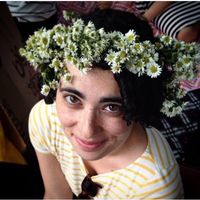
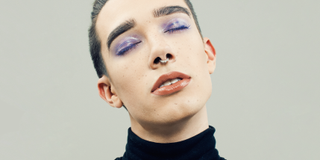
I 'm a boy in makeup. I'm not trans. I'm not a drag queen," says Alan Macias, 18, known more widely by his Instagram handle @Alannized. He sits before me with sculpted brows, shimmery cheeks, and lush false lashes framing bright doe eyes—he evokes a glittering Bambi. "I just really enjoy the art of makeup," he asserts, "and being a boy who does it." With over 200,000 followers, Alannized is revered for his beauty tutorials and glamorous looks: elaborate smoky eyes, bold lip colors, and intricate contouring—all on his own face.
While boundary-pushing in his own right, Alannized is part of a larger beauty movement—an expanding community of male-identified digital stars who showcase their expertise on themselves. And their rapidly growing followings, totaling in the millions, evidence the power of their influence, from Instagram to YouTube channels where fans of all genders can watch them transform.
It all started in their boyhood bedrooms—private spaces where their talents flourished in secret.

An avid fan of YouTube beauty tutorials, Alannized, then 16, started practicing makeup looks in his room after school, focusing first on perfecting the more subtle art of evening out his skin and amping up his eyebrows. (His first beauty product was a nearly exhausted tube of blemish base cream given to him by his best friend, equally obsessed with YouTube beauty bloggers).
Patrick Simondac (@PatrickStarrr), 26, arguably one of the most influential men in the movement with 1.7 million followers on both Instagram and YouTube, also got his start as a teen furtively experimenting with makeup, stealing his mother's foundation—"Mama Starr," he refers to her fondly—when she wasn't looking.
Patrick's best friend and fellow beauty boy superstar, Manny Gutierrez (@MannyMua733), 25, recalls an even earlier enthusiasm for makeup: As a little boy, his mother caught him playing with her lipstick. Raised in a Mormon household—"liberal Mormons," he specifies, given that he grew up in Southern California—he quickly learned to hide his interest in beauty. "I wanted to play with eyeliner and makeup while other boys were playing with G.I. Joes," Manny remembers. "So it was kind of tough for me because I didn't really understand why I wanted to play with the 'girl' things rather than the 'boy' things."
By his late teens, Manny had taken to locking himself in his mother's room to experiment with her makeup. From there—for him and for his peers—play evolved into practice.
Stay In The Know
Marie Claire email subscribers get intel on fashion and beauty trends, hot-off-the-press celebrity news, and more. Sign up here.
"I had acne," says Patrick, "so I was really interested in creating an even base." That eventually graduated to an obsession with bronzer: "I was a chubby kid, so I really wanted to sculpt my face, sculpt my eyes, sculpt my nose."
For Alexander Rivera (@AlexFaction), 25, a more traditionally masculine-presenting beauty boy with almost a quarter of a million Instagram followers and clientele like Jennifer Lopez, the resolve to do makeup grew out of a stifled need for expression.
After his mother lost her job, he left his hometown of Chicago and moved in with his grandmother. "There weren't very many creative outlets there," he remembers of the small, remote town in southern Illinois. To fill that hole—and one on his résumé—he launched a YouTube channel. "That's when I really ended up turning the brush inward and I started doing makeup on myself."
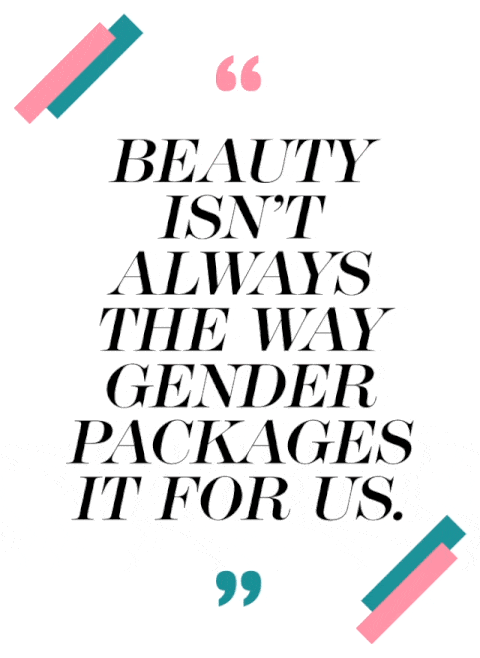
It was a passion—and an escape. "I felt like it was just a getaway for all the problems I was going through at that time," Alannized recalls of being a feminine-leaning boy in macho-centric, Hispanic culture. But his ability to express himself through makeup made him feel tremendously free. "Even though I knew at the time it was very against gender norms, it just made me feel very happy about myself."
Patrick and Manny were able to channel their skills into day jobs at big makeup brands. In 2011, Patrick started working at a Macy's makeup counter in his hometown of Orlando. "It was kind of like my excuse to wear makeup," he says. Meanwhile, in San Diego, Manny was working counters at MAC and Sephora, presenting in "full beat glam" while also attending school full-time on a pre-med track.
While they were accepted professionally as men in makeup, there were certain boundaries: One day at the Macy's counter, Patrick wore pink brows to help promote a new product. But his colleagues and manager asked him to remove all the makeup from his face. "They said it wasn't appropriate for clients, or it wasn't 'Macy's appropriate,' when I thought this makeup counter and brand stood for men wearing makeup, and for everyone wearing makeup."

He struggled with similar opposition at home, too. By age 20, Patrick had begun wearing heavier makeup more regularly, which concerned his tight-knit Filipino family (who make frequent appearances on his various social media channels). His parents told him to stop wearing makeup altogether. "My mom and dad—they love me no matter what—looking back, I think they wanted me to not get bullied," he recalls. "At the time I thought it was them not loving me."

James Charles Dickinson (@jcharlesbeauty), 16, faced a more pointed concern: His parents began equating his love of cosmetics with gender identity play, particularly as his looks got more ambitious and elaborate. "My parents started questioning me about whether or not I was transgender—whether or not I was trying to be a woman. It was a big argument," he remembers. "It took a lot of thorough conversations to explain that it's an art form for me. I'm still confident as a boy and I will always be a boy. I can be confident with bare skin and with a full face."
Manny took a more proactive approach to his family's disapproval: When he began documenting his makeup on Instagram, he blocked them all—an effort to protect himself and isolate his interests. But his immediate family, as well as his church, started to catch on. When they learned of his online presence, his parents approached him with worry for his career: "They were just like, 'If you're doing this makeup online, how do you feel like medical schools are going to be? Do you think they're going to accept you into medical school?'" Manny recalls. "They didn't understand then that it was my creative freedom."
He stopped going to church after being outted as gay by his parents. They proposed counseling. "I wanted to make them happy," he says. "I got straight As in school. I was the perfect child, except this one aspect of myself. It was very, very difficult at first, but we got through it and here I am, lashes and all."

Patrick first joined Instagram in 2012 at the urging of a friend. He waded through hashtags seeking out other men who were interested in makeup—when he found like-minded accounts, it was game-changing. "In Orlando, I didn't know that there was more than the makeup counter in the mall, that was like the first step," he recalls.
His own following grew as more and more Instagram users gravitated to his personality, channeled through detailed sculpting and thick lashes. "I really wanted to be close friends with him at the time," Manny remembers of having found Patrick on Instagram, captivated by his talent.
They met for the first time in 2014 at PHAMExpo, a conference for beauty professionals, and have since developed a very close friendship (often documented on both their social media channels). With over 3 million Instagram followers (and over 2 million YouTube channel subscribers) between them, they've since evolved into two of the most prominent—and professionally savvy—pillars of the boys in beauty landscape. They're now even being courted by makeup brands for partnerships.
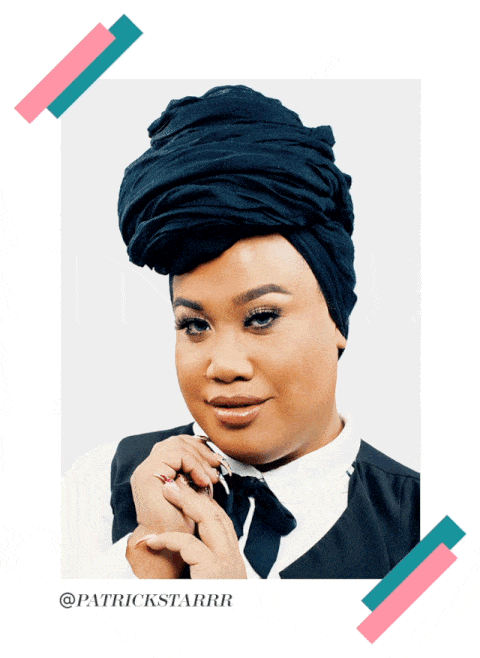
This year alone, Patrick has been chosen as one of nail polish line Formula X's #ColorCurators, has appeared at Sephora "Meet and Greets" as a Formula X brand ambassador, and has traveled to Spain on behalf of NYX Cosmetics. He's also a frequent attendee of beauty conventions like Generation Beauty, BeautyCon, and Glow Con, slated for this spring in Germany.
Manny credits Patrick with giving him the tools to effectively re-route his career: advising him on how to approach beauty brands, how to conduct business emails, and how to truly leverage himself as a brand. (Patrick and Manny are now represented by the same publicist). They often appear at beauty events together, but Manny now has collaborations of his own: a Makeup Geek eye shadow palette named after him as well as a lip set with Ofra Cosmetics.
Their visibility has made the world of boys in beauty all the more accessible, particularly on Instagram, to an even younger generation: "Men in makeup wasn't seen as normal, especially a couple of years ago. It wasn't as open as it is now," says Manny. "It's really cool seeing all the upcoming boys doing makeup."
James Charles is one of them. Although he only started working with makeup six months ago, he has upwards of 200,000 Instagram followers, a strong indication of his talent. His aesthetic leans more editorial, with faux freckles, artful constellations on his forehead, and white lipstick. "When I started doing makeup, I had no intention of doing drag," he says, despite having been inspired by the transformations he saw on RuPaul's Drag Race.
Although they are informed by the tradition and power of drag, the boys of beauty consider themselves—and their craft—to be worlds apart. They aren't trying to appropriate a performative female identity, nor push a female character. But they are also more than just pretty faces—they know their queer history and the profound drag legacy that has made their male-anchored presentation possible.
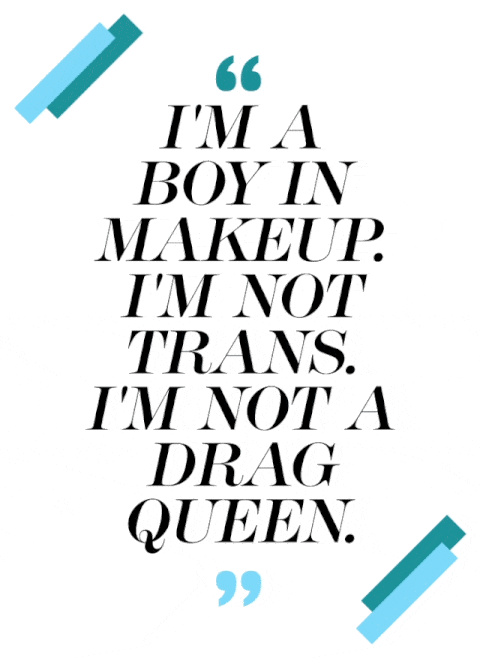
"Drag queens were really the trailblazers that led individuality and art," observes Alex. "I really do feel that the current movement of men in makeup, whether it be masculine or feminine, does derive from drag makeup."
For Manny it's not the look of drag but the motivation behind it that he emulates. "It's about transforming your face to make it look a different way," he explains. "It's just giving you creative freedom."
That freedom is timely. The boys in beauty aren't blurring gender—they're expanding it. Their unfurling of masculinity to include more variation and more expression is a valuable—even necessary—movement at a time when our country is having increasingly heightened conversations around gender. Their re-envisioning of what we consider to be "male" is a reminder that, for too long, masculinity has been kept in a rigid box, too delicate to touch or reinterpret.
The fact that millennial men don't even necessarily equate makeup and femininity indicates a new chapter in gender politics—a modern sequel to what male drag culture pioneered for most of the 20th century. Coming up from the corners of Instagram and rapidly moving to center stage, the beauty boys movement parallels drag becoming more and more mainstream: from the award-winning 1990 documentary Paris Is Burning, which captured the underground drag scene in 1980s New York City, to RuPaul becoming the first drag spokesperson for a major beauty brand, MAC, in 1996. Indeed, the beauty boys have experienced their own version of navigating a subculture that, for a brief period of time, was somewhat secret—but that's all changing.
Nearly five years after Patrick first started posting selfies, beauty boys are at the tipping point of popular culture. And they're being led there by big beauty brands. It's a wise move for cosmetic companies, says Frank B., makeup artist and artist ambassador at Milk Makeup. "We want everyone to have a go with our makeup," he says when explaining the unisex direction that Instagram beauty trends reveal. "Beauty isn't always the way gender packages it for us."
As Alex puts it, "All you really see is confidence."

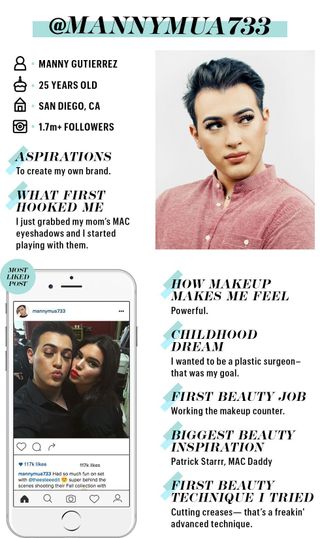
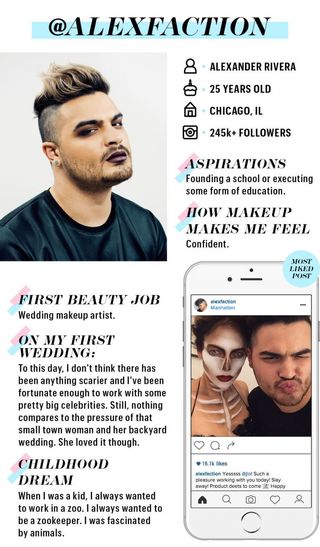
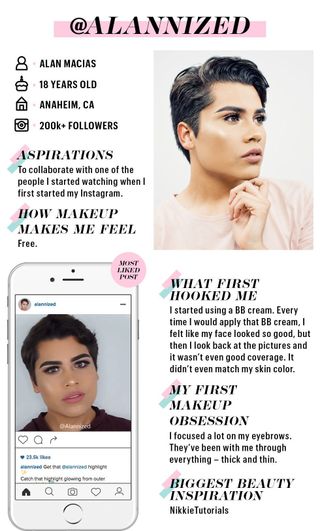
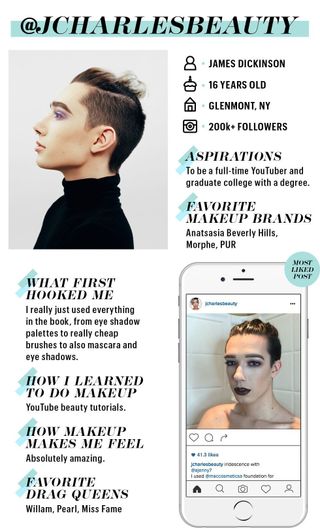
With special thanks to Milk Makeup for supporting the production of this story and the celebration of self-expression.

Photos by Ryan Pfluger, videos by Mixed Makeup.
-
 Zendaya Says Her Experiences at the Met Gala Have Been “Exciting”—But Also “Terrifying” and “Daunting”
Zendaya Says Her Experiences at the Met Gala Have Been “Exciting”—But Also “Terrifying” and “Daunting”After a five year hiatus, Zendaya will return to the Met this year as a co-chair of the event.
By Rachel Burchfield Published
-
 Jennifer Lopez Wears the Widest Wide-Leg Denim
Jennifer Lopez Wears the Widest Wide-Leg DenimShe's redefining "puddle jeans."
By Halie LeSavage Published
-
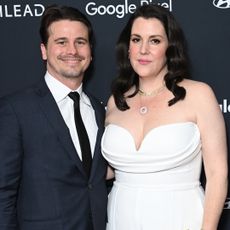 Melanie Lynskey Says Husband Jason Ritter Is “Sacrificing” Roles for Her Career
Melanie Lynskey Says Husband Jason Ritter Is “Sacrificing” Roles for Her Career"I think a lot of men don't have that kind of self-esteem and that respect for their partner."
By Danielle Campoamor Published
-
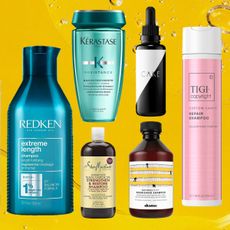 The 32 Best Hair Growth Shampoos of 2024, According to Experts
The 32 Best Hair Growth Shampoos of 2024, According to ExpertsRapunzel hair, coming right up.
By Gabrielle Ulubay Published
-
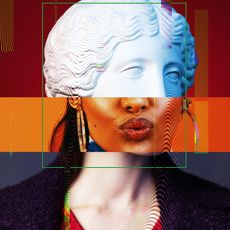 Beauty 3.0
Beauty 3.0In the metaverse, we can be whoever we want to be. Is that a good thing?
By Mattie Kahn Published
-
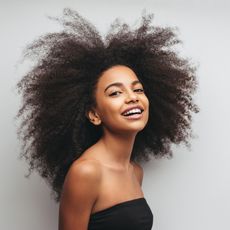 The 20 Best Hair Masks for Damaged Hair, According to Experts and Editors
The 20 Best Hair Masks for Damaged Hair, According to Experts and EditorsHealthy strands, here we come!
By Gabrielle Ulubay Last updated
-
 Selena Gomez Shared Gorgeous Makeup-Free Selfies Feat. Her Natural Curls
Selena Gomez Shared Gorgeous Makeup-Free Selfies Feat. Her Natural CurlsYes to this.
By Iris Goldsztajn Published
-
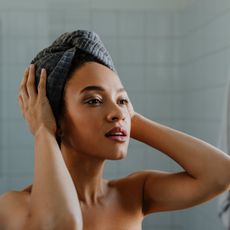 How Often You Should Wash Your Hair, According To Experts
How Often You Should Wash Your Hair, According To ExpertsKeep it fresh, my friends.
By Gabrielle Ulubay Published
-
 The 11 Best Magnetic Lashes of 2023
The 11 Best Magnetic Lashes of 2023Go ahead and kiss your messy lash glue goodbye.
By Hana Hong Published
-
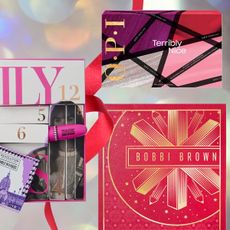 Beauty Advent Calendars Make the Perfect Holiday Gift
Beauty Advent Calendars Make the Perfect Holiday GiftThe gift that keeps on giving.
By Julia Marzovilla Last updated
-
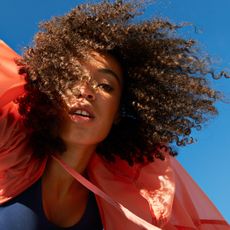 The 18 Best Natural Hair Products in 2023
The 18 Best Natural Hair Products in 2023Remember: Your curls are your crown.
By Gabrielle Ulubay Published